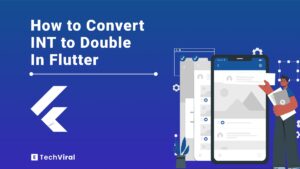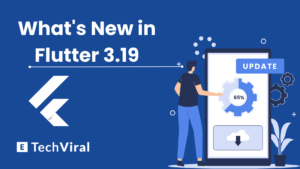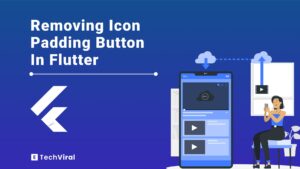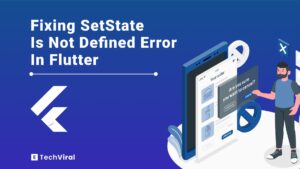In Flutter app development, seamlessly integrating JSON data into Dart code is crucial for building efficient, high-performing applications. This guide provides a comprehensive look at the process of converting JSON to Dart, outlining essential steps, tools, and best practices.
Aimed at developers of all skill levels, it ensures that your data handling is optimized, enhancing your app’s functionality and user experience. Let’s explore how to master this vital conversion.
Why Should You Convert JSON to Dart?
Converting JSON to Dart enhances app performance by ensuring efficient data processing. This results in faster app responsiveness and quicker loading times, essential for apps dependent on data parsing and network operations. It enhances the user experience by maintaining smooth application operation.
Moreover, When you convert JSON to Dart, It streamlines development processes. This conversion introduces a structured data management approach, simplifying the handling of complex datasets. Also reduces errors, improves code clarity, and eases maintenance, freeing you to focus on innovation and new features.
Converting JSON to Dart Quick Steps
In short, here are the actual steps for converting JSON to Dart, We have explained with practical examples bleow from understading JSON and dart, converter/Tools, manual practice and also with quicktype.
- Understand your JSON structure.
- Create a Dart class matching your JSON.
- Add properties in Dart for each JSON field.
- Write a
fromJsonmethod to parse JSON to Dart. - Implement a
toJsonmethod to convert Dart back to JSON. - Test your Dart class to ensure accuracy.
What is JSON and Dart?
JSON, or JavaScript Object Notation, is a simple data format used to store and transport data. It’s like a to-do list for your app, telling it what information to display and how. Here’s a snippet of what JSON might look like:
{
"name": "Sora",
"type": "AI",
"features": ["Images", "videos"]
}
Dart, on the other hand, is the programming language behind apps built with flutter framework. It’s known for its flexibility, speed, and the joy it brings to developers. Dart uses classes and objects to make sense of JSON data. Here’s how you’d represent the JSON example in Dart:
class AI {
String name;
String type;
List<String> features;
AI({this.name, this.type, this.features});
}
So, why bring JSON and Dart together? Imagine you’re receiving data from the internet, like user profiles or product information. JSON is often the go-to format for that data. Dart needs to understand this data to display it in your app.
To convert JSON to a Dart object, you might write something like this:
Map<String, dynamic> json = {
"name": "sora",
"type": "AI",
"features": ["images", "videos"]
};
var ai = AI(
name: json['name'],
type: json['type'],
features: List<String>.from(json['features']),
);
This conversion is crucial. It allows your app to dynamically display data, fetched from anywhere in the world, in a structured and user-friendly way. It’s what makes your app come to life with real-world information.
JSON to Dart Converter Tools
- Quicktype
- Json2Dart
- Dart Convert
Pros and Cons of Popular Converters
Quicktype
- Pros: Supports multiple languages, including Dart. Generates efficient code. Easy to use with a friendly interface.
- Cons: Might require manual tweaking for complex JSON structures.
Json2Dart
- Pros: Simple, straightforward tool designed specifically for Dart. Good for basic structures.
- Cons: Lacks support for advanced features and customization.
Dart Convert
- Pros: Built into the Dart language, ensuring seamless integration. Offers flexibility for manual coding.
- Cons: Requires more manual effort compared to dedicated conversion tools.
Why Quicktype is a Go-To Choice
Quicktype stands out because it hits the sweet spot between ease of use and functionality. It’s not just about turning JSON into Dart; it’s about doing it efficiently, with minimal fuss.
For developers juggling multiple projects, Quicktype’s ability to handle various programming languages makes it a versatile tool.
Plus, its user-friendly interface means you spend less time decoding how to use the tool and more time coding. While it might need a bit of manual intervention for complex data, the time saved on the initial conversion makes it worth it.
How to Convert JSON to Dart Class manually: Practical Process
Converting JSON to Dart is a key skill, especially when you need precise control over the process. Let’s work through a practical example.
Consider this JSON object:
{
"title": "Flutter Developer",
"yearsExperience": 5,
"hasCertification": true
}
Preparation
First, we’ll design a Dart class that mirrors the JSON structure. Our Dart class looks like this:
class JobProfile {
String title;
int yearsExperience;
bool hasCertification;
JobProfile({required this.title, required this.yearsExperience, required this.hasCertification});
}
Conversion Process
Now, let’s dive into converting JSON to a Dart class instance and vice versa with two methods: jsonToJobProfile and jobProfileToJson.
class JobProfile {
String title;
int yearsExperience;
bool hasCertification;
JobProfile({required this.title, required this.yearsExperience, required this.hasCertification});
// Convert a JobProfile object into a map object
Map<String, dynamic> jobProfileToJson() => {
"title": title,
"yearsExperience": yearsExperience,
"hasCertification": hasCertification,
};
// Convert a map object into a JobProfile
factory JobProfile.jsonToJobProfile(Map<String, dynamic> json) => JobProfile(
title: json["title"],
yearsExperience: json["yearsExperience"],
hasCertification: json["hasCertification"],
);
}
These methods facilitate a two-way conversion between the JSON representation of a job profile and its Dart class counterpart. This example shows how to manage a straightforward JSON object manually, offering a clear understanding of the underlying data structure.
Also read:
How to Convert JSON to Dart Class with Quicktype
To practically demonstrate converting JSON to a Dart class using Quicktype, let’s follow these concrete steps. We’ll convert a JSON object representing a simple employee profile into a Dart class. This example assumes you have npm installed on your computer to install Quicktype.
JSON Example:
{
"employeeName": "Jane Doe",
"employeeID": 123,
"isFullTime": true
}
Step 1: Install Quicktype
Open your terminal or command prompt and run the following command to install Quicktype globally on your system:
npm install -g quicktype
Step 2: Create a JSON File
Create a new file named employee.json and paste the above JSON content into it.
Step 3: Run Quicktype to Generate the Dart Class
Navigate to the folder containing your employee.json file in the terminal. Then, execute the following command:
quicktype employee.json -o Employee.dart --lang dart
This command instructs Quicktype to generate a Dart class from the employee.json file and output the result to a file named Employee.dart.
Step 4: Review the Generated Dart Code
Open the Employee.dart file to see the generated code. It should look similar to this:
import 'dart:convert';
class Employee {
Employee({
required this.employeeName,
required this.employeeID,
required this.isFullTime,
});
final String employeeName;
final int employeeID;
final bool isFullTime;
factory Employee.fromRawJson(String str) => Employee.fromJson(json.decode(str));
String toRawJson() => json.encode(toJson());
factory Employee.fromJson(Map<String, dynamic> json) => Employee(
employeeName: json["employeeName"],
employeeID: json["employeeID"],
isFullTime: json["isFullTime"],
);
Map<String, dynamic> toJson() => {
"employeeName": employeeName,
"employeeID": employeeID,
"isFullTime": isFullTime,
};
}
Step 5: Using the Generated Dart Class
To use the Employee class in your Dart or Flutter project, you can now easily convert JSON data into an Employee object and vice versa. For example:
Converting JSON String to an Employee Object:
void main() {
String jsonString = '{"employeeName": "Jane Doe", "employeeID": 123, "isFullTime": true}';
Employee employee = Employee.fromRawJson(jsonString);
print(employee.employeeName); // Output: Jane Doe
}
Converting an Employee Object to a JSON String:
void main() {
Employee employee = Employee(
employeeName: "Jane Doe",
employeeID: 123,
isFullTime: true,
);
String jsonString = employee.toRawJson();
print(jsonString); // Output: {"employeeName":"Jane Doe","employeeID":123,"isFullTime":true}
}
Also read:
What are The Best practices for converting JSON to dart
Every ingredient must be fresh, every step followed with care. Here are some best practices to keep in mind:
1. Understand Your JSON Structure
Before diving in, take a moment to really understand your JSON. It’s like reading a recipe before cooking. Know which parts are lists, which are objects, and what types of values you’re dealing with.
2. Use Strong Typing
Dart is all about strong typing. Define your variables and model classes clearly. If an age is an integer, make sure it’s not mistakenly treated as a string. It’s like making sure you’re using sugar, not salt, in your cake.
3. Null Safety
Null safety is a big deal in Dart. It’s like making sure the stove is off when you’re done cooking. Always initialize your variables, and use null checks or default values to avoid runtime errors.
4. Leverage fromJson and toJson
Implement fromJson and toJson methods in your model classes. It’s like having a secret sauce recipe that turns ordinary ingredients into something extraordinary. This allows for easy serialization and deserialization of your objects.
5. Handle Exceptions Gracefully
When dealing with JSON parsing, things can go wrong. Maybe the format isn’t what you expected, or a value is missing. Wrap your parsing code in try-catch blocks. It’s like keeping a fire extinguisher handy, just in case.
6. Use Code Generation Tools When Possible
Tools like Quicktype can save you a ton of time by generating Dart classes from JSON. It’s like having a kitchen gadget that does the chopping for you. But always review and tweak the generated code to fit your needs perfectly.
7. Optimize Performance for Large JSON Files
If you’re working with huge JSON files, consider parsing and processing them in chunks. It’s akin to cooking for a big party. You wouldn’t try to do it all in one pot.
8. Keep Your Code Readable
Finally, write your code as if someone else will need to read and understand it tomorrow. Clear, readable code is like a well-written recipe. It makes everything easier for the next person in the kitchen.
Some Common Mistake To Avoid
Here’s how to stay on the smooth path, avoiding the bumps that might throw you off course.
1. Overlooking Null Safety in Dart
Think of null safety as the seatbelt in your coding car. It’s there to protect you from crashes (or in this case, runtime errors). Dart’s null safety feature requires you to be explicit about whether a variable can be null. So, always ask yourself, “Can this ever be null?” If the answer is yes, plan accordingly. Don’t let nulls surprise you. It’s like checking the weather before a hike; it prepares you for what’s ahead.
2. Ignoring Custom Parsing for Complex JSON Structures
JSON can be as layered as a gourmet lasagna, with arrays nested inside objects, nested inside other objects. Using a one-size-fits-all approach to parsing can lead to a mess. Sometimes, you need to roll up your sleeves and craft custom parsing logic for those layers. Skipping this step is like ignoring the recipe instructions to simmer on low heat—you might end up with a dish that’s not quite right.
3. Forgetting to Test Converted Classes
Imagine you’ve built a beautiful ship. It’s sleek, shiny, and ready for the ocean. But would you send it out without a test run? Testing your converted Dart classes is like that crucial maiden voyage. It ensures everything works as expected before you set sail on the high seas of app development. Skipping tests is akin to ignoring the leak in the hull—it might not end well.
Conclusion
Learning to convert JSON to Dart can really make your apps run better and your coding life easier. Keep in mind to handle nulls carefully, tackle complex data with custom code, and always test your work. This guide’s here to help you through it, making sure you’re all set for smoother coding adventures. Stick with these pointers, and you’ll be a JSON to Dart wizard in no time.
FAQ’s
Can I use any JSON structure to convert to Dart?
Yes, you can convert any JSON structure to Dart. Whether your JSON is simple or complex with nested objects and arrays, Dart can handle it. You’ll just need to ensure your Dart class structure mirrors your JSON for a smooth conversion.
Do I need any special tools for the conversion?
No special tools are required for manual conversion, but tools like Quicktype can automate the process, making it faster and reducing errors.
How do I handle arrays in JSON when converting to Dart?
For JSON arrays, you’ll create a list in Dart. Each element in the JSON array corresponds to an item in the Dart list, which you’ll define according to the data type of the elements in the JSON array.
What if my JSON data changes frequently?
If your JSON data changes often, ensure your Dart model classes are flexible. Use methods that can parse dynamic fields and consider writing additional logic to handle unexpected, missing, or new data gracefully.
Can converting JSON to Dart improve my app’s performance?
Yes, efficient conversion and well-structured Dart models can significantly enhance data parsing speed and app performance, leading to smoother and more responsive user experiences.











